Looking for a list of blue fruits? You’re in the right place–we’ve put together a mind-blowing list of fruits that are blue!
Of all colors of the spectrum, blue is the least appetizing one.
As humans, we don’t usually eat many fruits in blue color. Nor do we eat a wide number of blue vegetables.
In fact, most colored fruits are yellow, orange, and red, and these colors are indeed the hues we perceive as succulent and appetizing.
In today’s article, we’ll talk about 13 interesting blue fruits to make sure you have all the colors of the rainbow on your plate and seriously up the nutritional content of your meal. Ready for some colorful fruits?
Blue Fruits
Here are the few fruits that are blue.
1. Blueberries
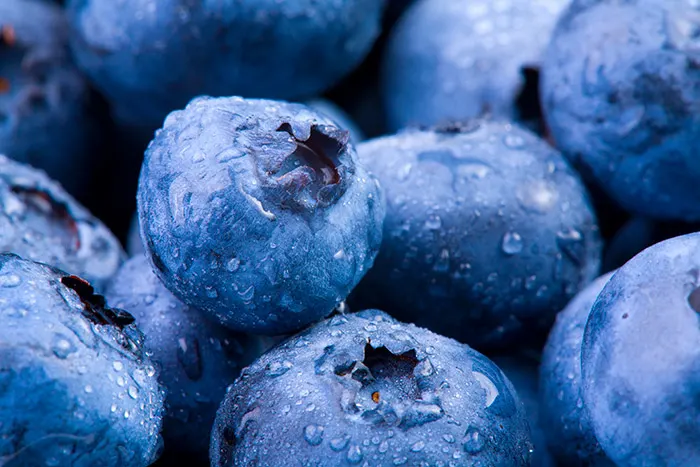
“What color are blueberries?”, we hear this question pretty often!
While it is a simple question, the answer isn’t so easy.
Blueberries are blue fruits high in antioxidants and packed with nutrients that are excellent for heart health. (Also, they are convenient fruits for snacking at work or school.)
However, some fruits might have a purple undertone, making them look purple instead of blue.
So, to answer the question: blueberries are delicious fruits that are blue, and sometimes purple!
2. Blackberries
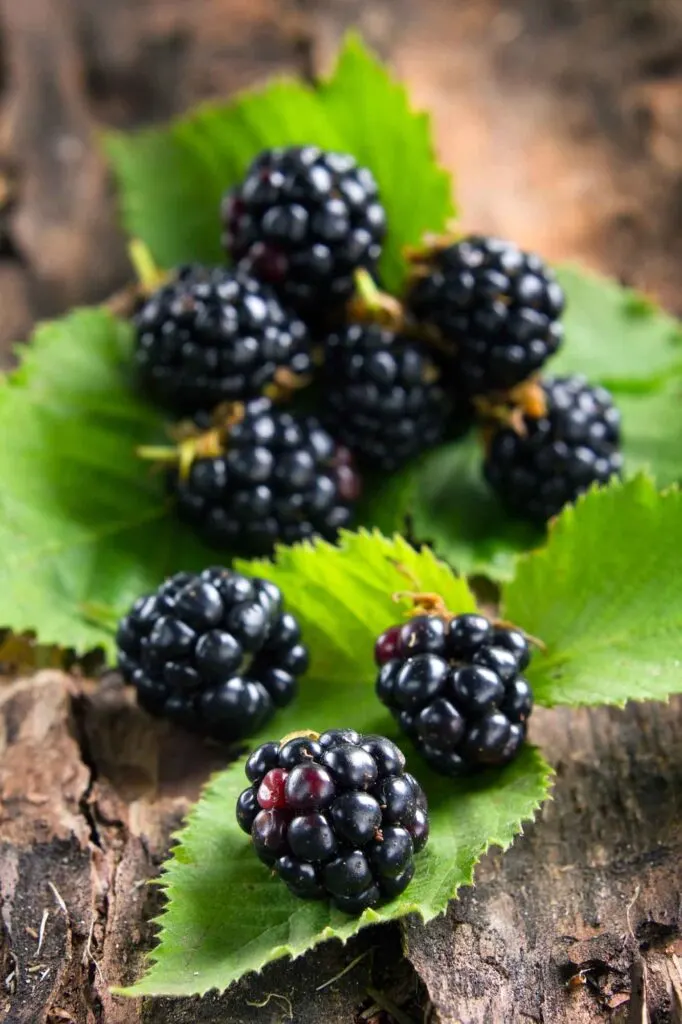
Blackberries are a type of currant. They are thorny shrubs that can be found on the outskirts of forests and hedges.
Blackberries grow from tiny, white flowers that form in late summer. These tart berries have a very dark shade of blue that appears to be black.
Besides, they are excellent for bone health and decrease the urge to snack between meals.
3. Black Currants
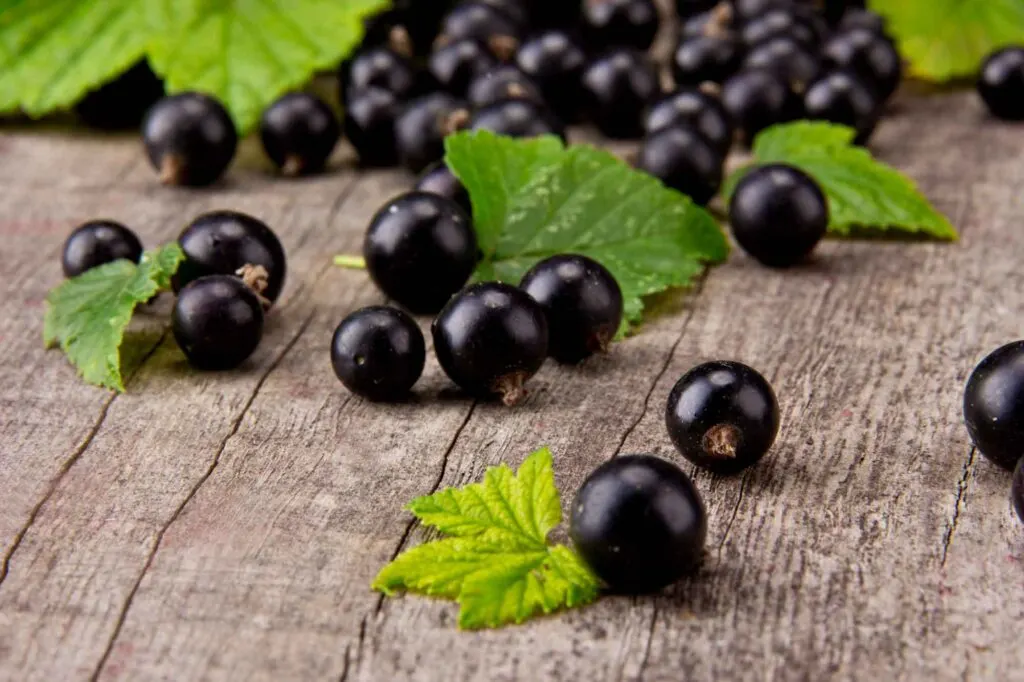
Black currants are very small, dark bluish-black berries that are mostly grown in the United States. These blue fruits are honey-sweet, with a pleasant flavor. They are also rich in vitamin C, potassium, and calcium.
The seed is probably best known for its use in making black currant liqueur, which is used in mixed drinks.
The black currant drink has recently grown in popularity in style-conscious circles because of its antioxidant benefits.
4. Indigo Rose Tomatoes
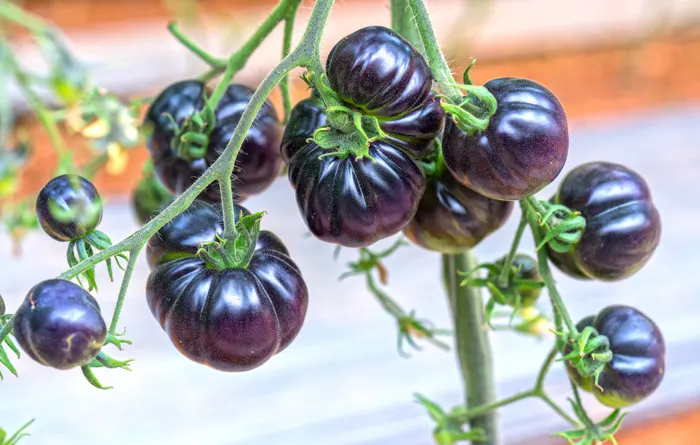
Blue tomato is a dark blue-purple fruit that is high in antioxidants.
Although these are artificial blue foods in nature, their color comes from anthocyanins, a naturally occurring pigment present in plants.[1]
5. Blue Marble Fruits
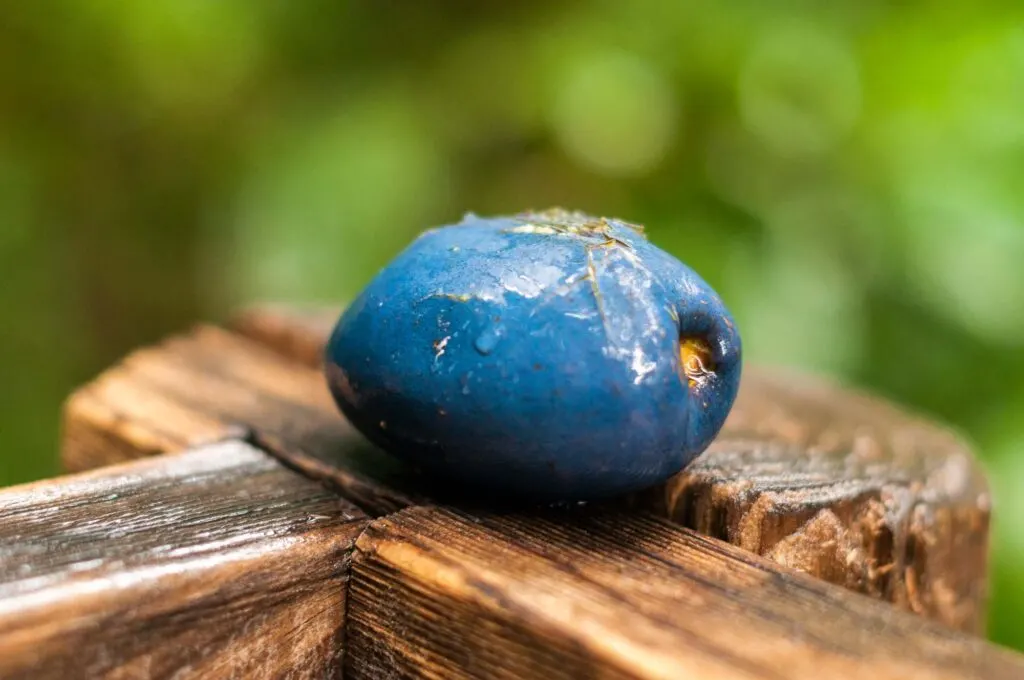
Also known as blue quandong, this blue fruit is native to eastern Australia and has a rich blue color.
Although edible, their green pulp is not very tasty as they have a tangy, bitter flavor.
6. Blue Elderberries
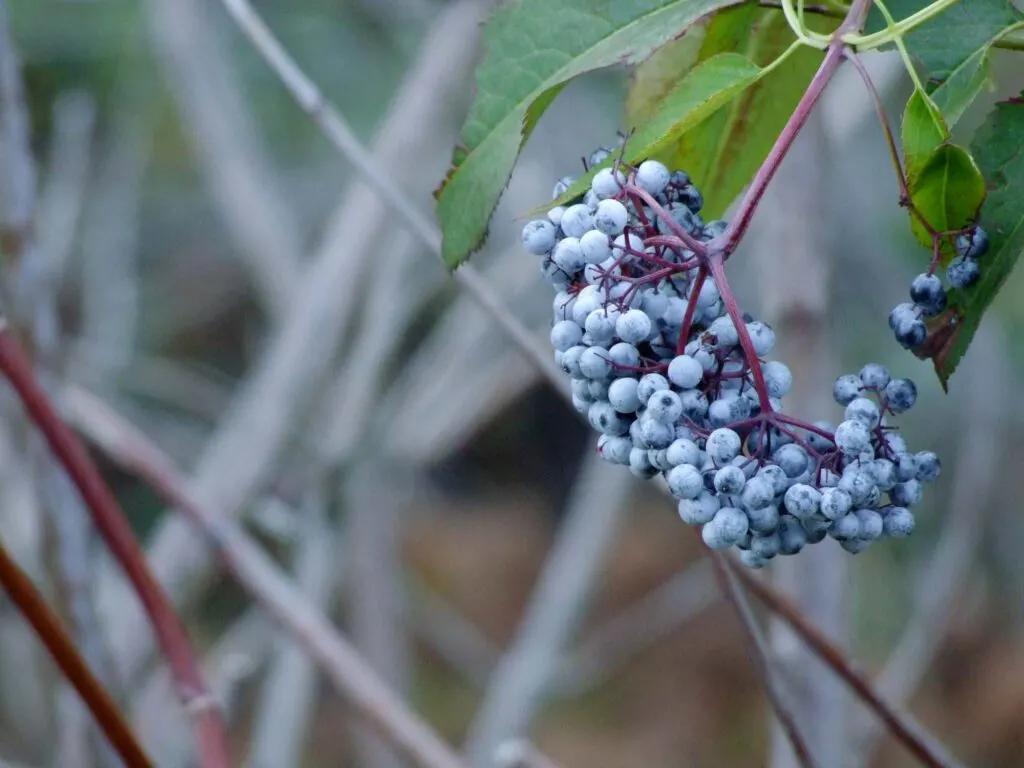
However a major source of food for birds in California, these blue-purple fruits are native to a large region in the US, going from Oregon to western Texas.
Its blue berries are edible, and while they can be eaten fresh, they’re best cooked or made into elderberry wine, jam, syrup, and pies.
7. Damson Plums
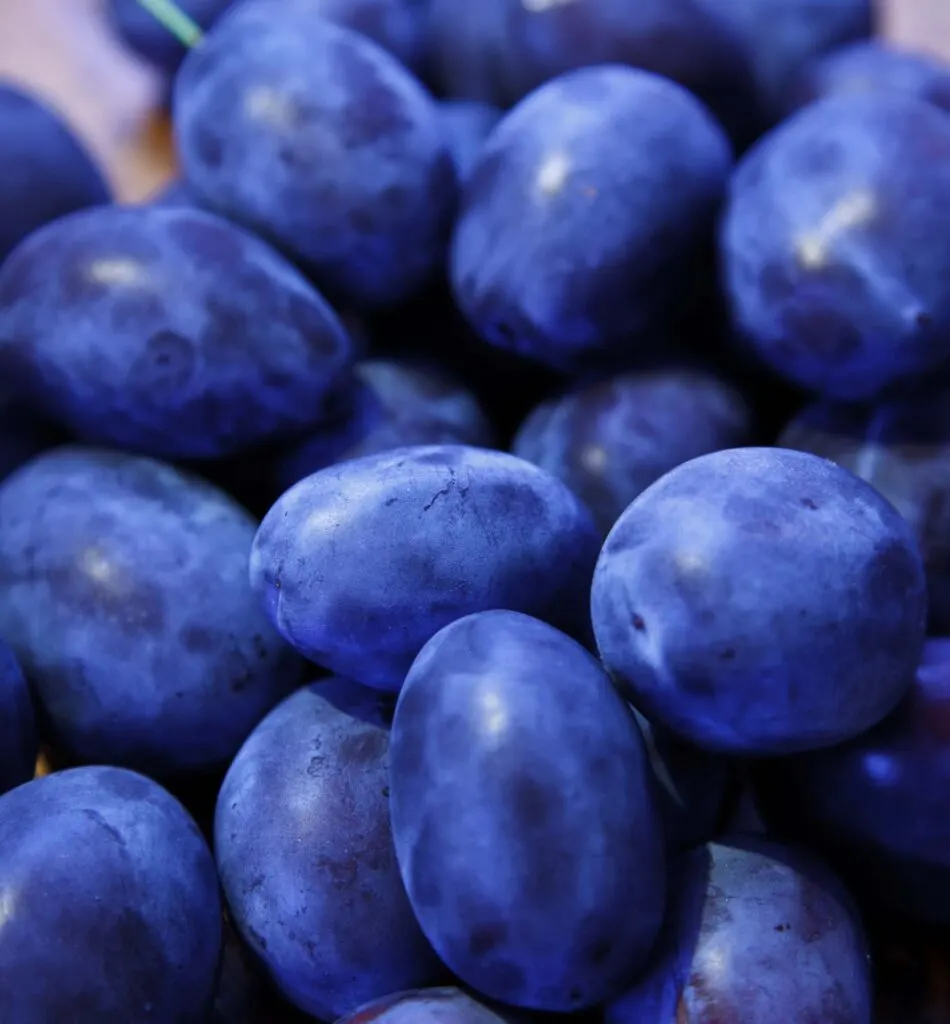
Often processed into jams and jellies, Damson plums are a great source of fiber.
These blue fruits are often dried to make prunes, which are a popular choice for digestive problems.
8. Concord Grapes
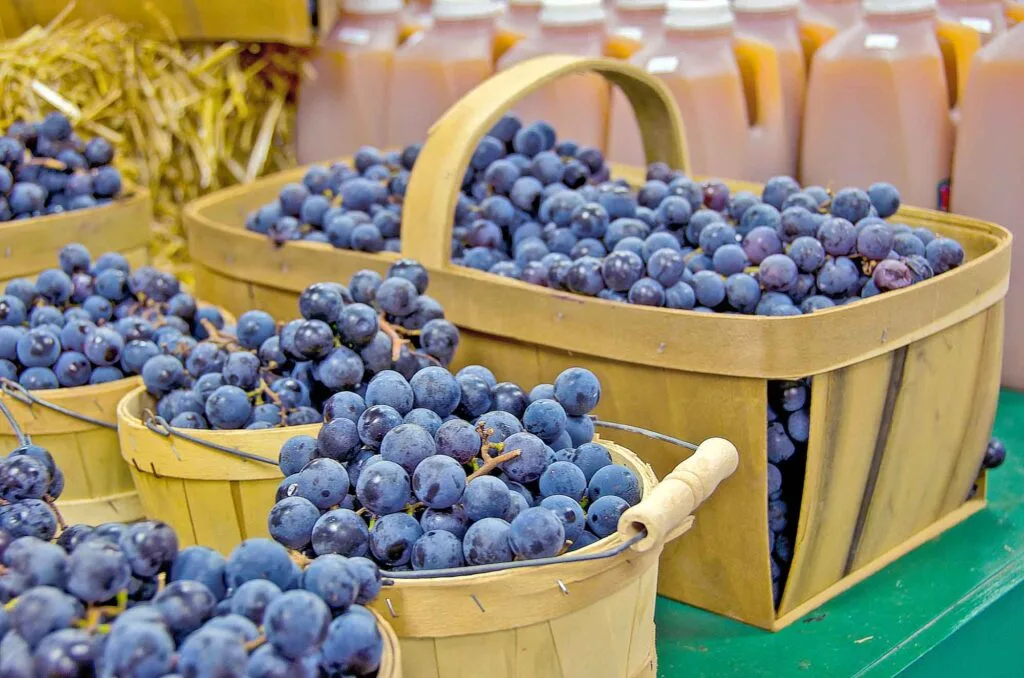
These purple-blue fruits can be consumed in a variety of ways: fresh, jam, juice, and wine.
Not only that but these fruits that are blue have more antioxidants than green, red, or purple grapes,[2] so they can lead to better brain health.
9. Common Bilberries
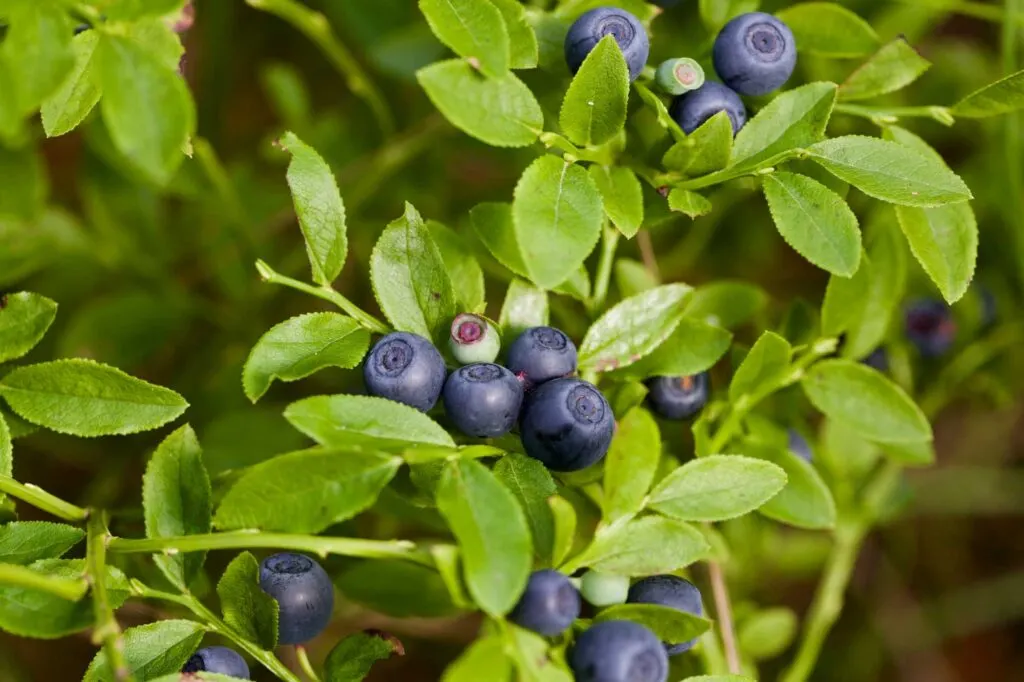
Native to Europe, bilberries are dark blue fruits that can be eaten fresh or made into jams, juices, and pies.
Although they look a lot like blueberries, they are different fruits. Namely, they have a much higher content of anthocyanins, which make their flesh red. Its taste is also stronger: tangy and fruity.
In France and Italy, they often use these fruits that are blue as a base for liqueurs.
10. Blue Jarrahdale Pumpkin
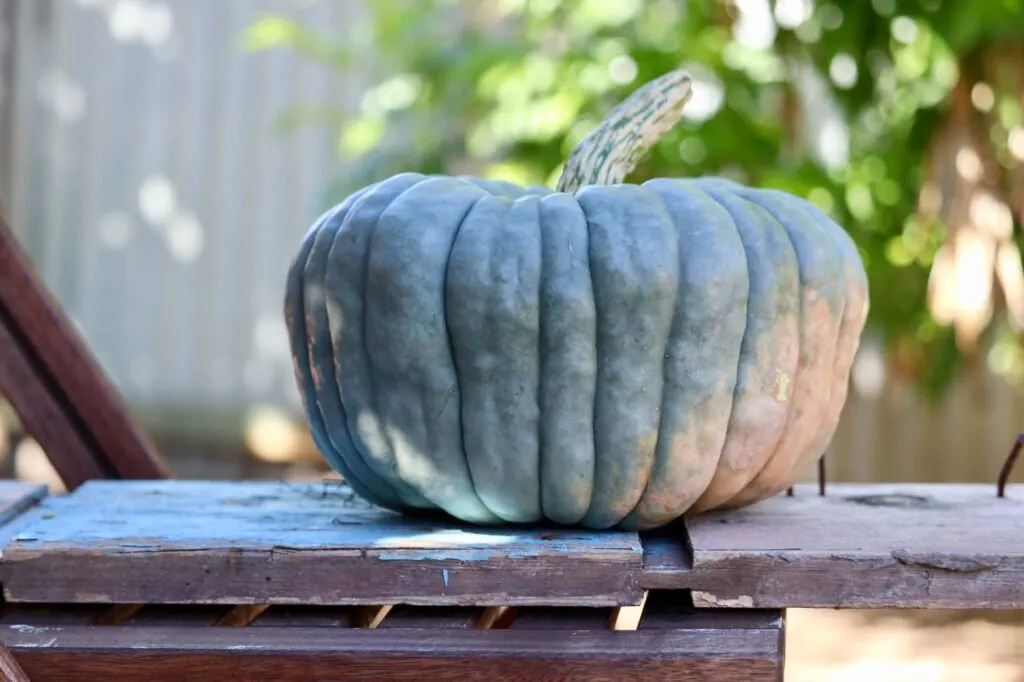
The Jarrahdale pumpkin is a type of fruit from Australia. Yes, pumpkins are technically fruits. This blue pumpkin has a trick, bluish-skin, and salmon flesh.
Needless to say, it contains all the health benefits of the commonly colored pumpkins, but it certainly adds a surprise factor to your Halloween decoration!
Blue food fact: Natural blue foods are rare, and their color comes from blue anthocyanins. They are the components that give off the blue color in foods.
11. Blue Corn
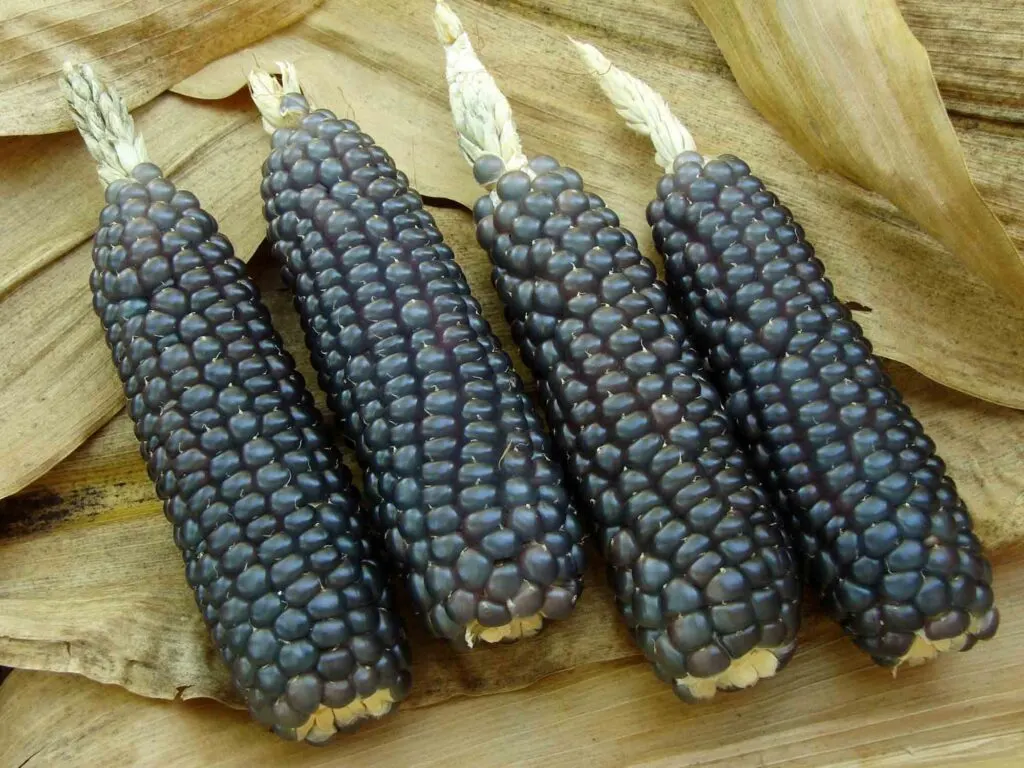
This blue colored fruit is one of the main types of corn used for the traditional Southern and Central Mexican food known as tlacoyo. (Botanically speaking, corn is a fruit and grain.)
Still, it’s also used to make blue tortillas and corn chips in the region and the US. It looks fun, tastes good, and has way more nutrients than white corn. What’s not to love?
12. Ceylon Blue Olives
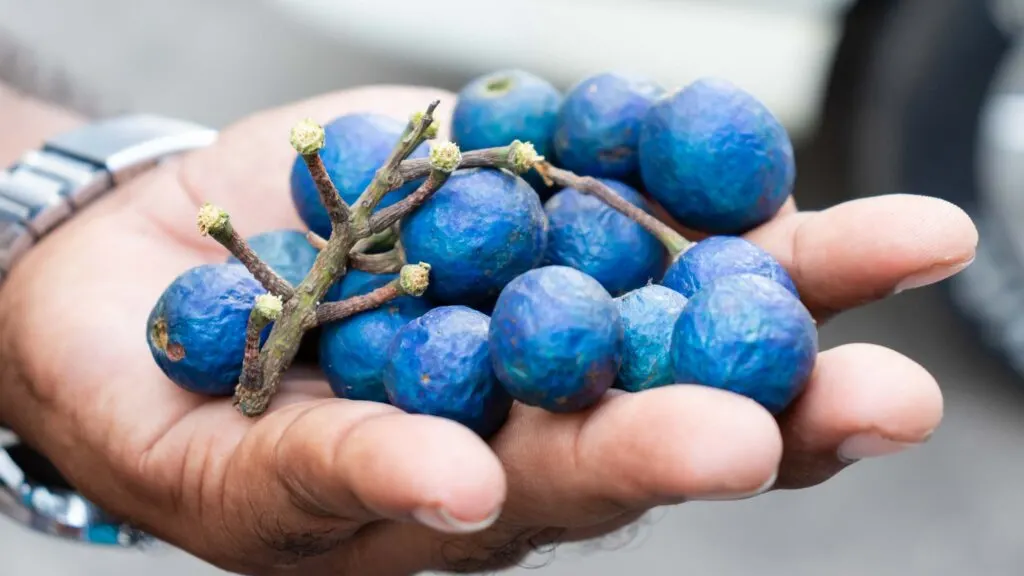
Ceylon olives are indigenous to Sri Lanka and have bright blue skin with green flesh.
These slightly sour olives are used in a variety of sweet and savory dishes, including served with other fruits or in salad dressings.
13. Blue Honeysuckle Fruits
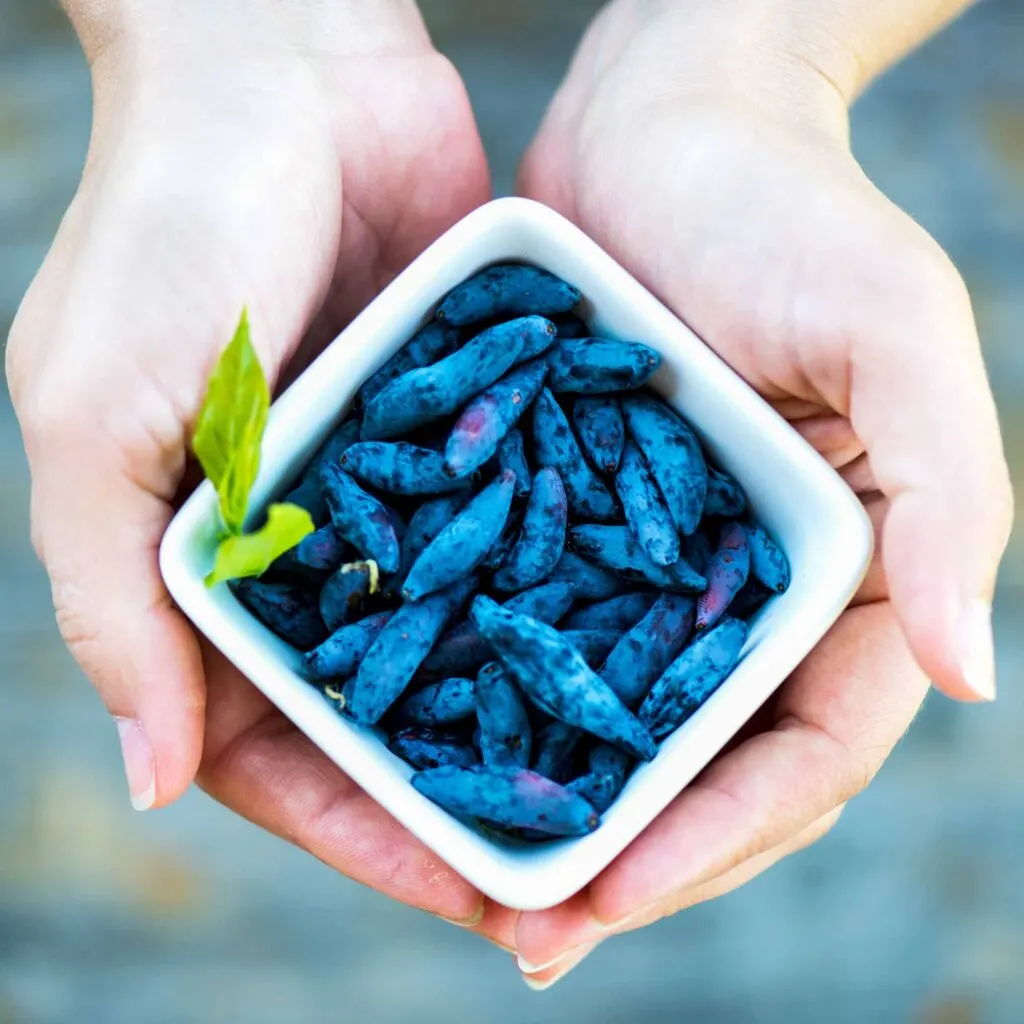
Honeysuckle fruits are spherical or elongated berries containing several seeds.
In most species, the berries are mildly poisonous, but a few of them, including the blue honeysuckle, are edible and grown for home use and commerce.
This fruit is native to Canada, Japan, Russia, and Poland and is used in jams, ice creams, candies, sauces, and more.
Questions About Blue Foods
Here are some common questions and answers about foods that are blue.
Are There Any Blue Foods?
Yes, but only a few. Blue is the rarest color in nature, and as such, you won’t find many blue things out there.
Also, blue anthocyanins are not so stable pigments and are often dominated by other pigments.
Are Blue Foods Healthy?
Absolutely! Blue foods get their unusual color from anthocyanins, which give off blue hues and improve heart health, boost brain function, and reduce the risk of obesity and other diseases.[3]
Did you enjoy this article about fruits that are blue? Then share it with a friend who might enjoy it too!
